Key Takeaways
- Digital clutter drains energy, attention, and emotional clarity.
- Most apps are designed to exploit your need for instant gratification.
- Digital minimalism is a strategic tool for reclaiming control.
- Decluttering your phone, files, and habits restores focus and autonomy.
- Owning your pace means designing your digital life with intention.
The Hidden Cost of Digital Clutter
Have you ever felt the urge to check your phone—without knowing why? Do you believe you’re in control of your digital life? If so, why is it so difficult to stop scrolling, liking, refreshing, or reacting?
These aren’t just habits. They’re conditioned responses—engineered by design.
Most modern apps are built to exploit your brain’s reward system. They trigger dopamine releases through likes, alerts, and endless scrolls. Behavioral psychologists and neuroscientists have helped tech companies craft interfaces that mimic slot machines: unpredictable rewards, bright colors, and social validation loops.
As Cal Newport explains in Digital Minimalism, these platforms aren’t neutral—they’re optimized to capture your time, energy, and attention. And in today’s economy, those three resources are the new currency.
Digital clutter isn’t just inconvenient. It’s a system designed to keep you reactive, distracted, and emotionally dependent.
The Problem: A Life Designed for Distraction
A cluttered digital life isn’t just about having too many apps. It’s about living in a reactive state—constantly checking, scrolling, posting, and responding.
From social media to food delivery, dating apps to entertainment platforms, most digital tools are designed to hijack your attention and feed your need for instant gratification. Notifications become micro-stressors. Algorithms learn your emotional triggers. And the result is a life shaped by external stimuli rather than internal intention.
If an app is free, your attention is the product.
This constant stimulation creates emotional dependency. You’re not just using your phone—you’re outsourcing your emotional regulation to it. And the more you rely on it, the harder it becomes to disconnect.
Which leads us to the question: how do you reclaim control?
The Philosophy: Digital Minimalism as Strategy
Digital minimalism isn’t about restriction—it’s about intention. It’s the practice of using technology to support your values, not distract from them. It’s about designing your digital environment to serve your goals, not sabotage them.
For me, this shift began in high school. I noticed how social media distorted reality—how people curated personas, posted quotes they didn’t live by, and chased likes for validation. The anxiety I felt after posting something, constantly checking for reactions, made me realize I wasn’t in control. I was being conditioned.
Reading Cal Newport’s Digital Minimalism helped me understand the psychology behind these platforms—and gave me the language to reclaim my digital life.
Most apps are built to exploit your brain’s reward system—not to serve your growth.
Once you understand this, digital minimalism becomes a strategic act of self-leadership. It’s how you reclaim control in a world built to keep you reactive.
The System: How to Declutter Your Digital Life
Maybe you’ve always felt the problem but never understood what to do about it. Here are a few strategies to help you start decluttering your digital life and regaining your freedom:
1. Apps
The average smartphone user has over 80 apps installed, yet only uses about 9 daily. Most apps exist to capture attention—not to serve you.
Start by removing:
- Social media apps that feed emotional dependency
- Shopping apps that encourage impulse spending
- Entertainment apps that offer endless distraction
- Any app that doesn’t serve a clear, intentional purpose
Keep only essential tools: calendar, banking, maps, mail. Use the “download-use-delete” model for food or utility apps.
2. Notifications & Boundaries
Notifications are designed to interrupt you. They create micro-stress, break focus, and reinforce reactive behavior.
Set boundaries like some my rules:
- Turn off all non-essential notifications
- Use screentime limits (e.g. 6PM–7AM)
- No phone in the bedroom
- No phubbing, no texting while walking or driving
- No work apps on your personal phone
3. Cloud Storage
A cluttered digital file system is just as draining as a cluttered desktop. Optimize your how you use and access your important documents and files.
Use OneDrive or a similar platform to create a “Digital Personal File” with folders like:
00 Archives01 Employment02 Finances03 Insurance04 ID Docs05 Vehicle06 Tax07 Housing
This system gives you instant access to important documents and reduces friction in daily life.
4. Digital Discipline
Minimalism isn’t just about what you remove—it’s about how you engage.
Practice:
- Smart TV off during weekdays
- Intentional offline blocks daily
- No mindless scrolling
- No reactive engagement
- No emotional outsourcing to apps
Psychological Impact: What You Gain
Decluttering your digital life isn’t just about organization—it’s about liberation.
You begin to:
- Feel less anxious and more grounded
- Reconnect with yourself without external validation
- Accept boredom and solitude as normal, even necessary
- Reclaim your time, energy, and attention
You stop outsourcing your emotions to apps—and start living with intention. Try the following
Actionable Steps to Get Started
- Delete one app you think you “can’t live without”
- Turn off notifications for 24 hours
- Create your own digital personal file
- Schedule one offline block per day
Take the First Step
Digital clutter isn’t just inconvenient—it’s engineered to keep you distracted. Start by removing one app, reclaiming one hour, or organizing one folder. Then subscribe to Own Your Pace and download the Digital Declutter Toolkit (coming soon).
👉 Next in the series: The Minimalist Budget: Spend Less, Live More
Want to Learn More?
To explore the neuroscience and behavioral psychology behind digital design, check out:
- The Center for Humane Technology – Research and tools on ethical tech design
- Cal Newport’s Digital Minimalism – Book and blog
- Tristan Harris on The Social Dilemma – Documentary and insights on attention engineering

